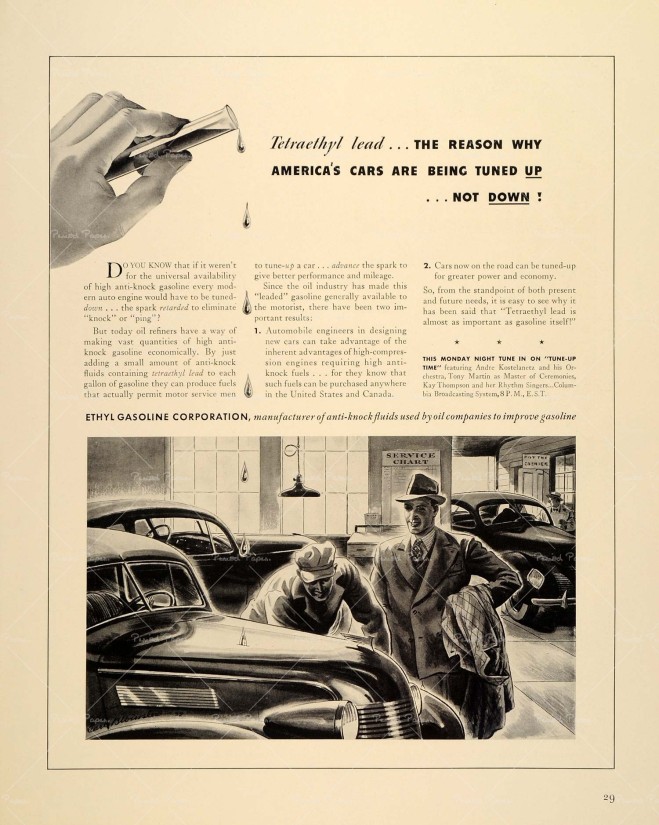Considered useful throughout the ages due to it’s physical and chemical properties, lead has always been a key material in the modernization of a civilization. From Egyptian figurines dating back to 4,000 B.C. to Roman pipes and aqueducts to modern vehicle batteries, lead has always been a material of interest. While lead may not have had a place as a luxury item, lead is a valuable (albeit dangerous) tool used to progress forward with.
Take for instance the automobile industry, an industry that owes many of it’s technological strides in the early 20th century to the use of tetraethyllead as a fuel additive. Created by General Motor’s chemist, Thomas Midgley Jr., tetraethyllead had been hailed as a great solution for the infamous “engine knocking” problem during the 1920’s. Essentially, the “engine knocking” problem prohibited automobiles from burning fuel too quickly or risk a temporary loss of power. However, utilisation of tetraethyllead as a fuel additive managed to substantially increase the affected fuel’s octane rating, which meant that it could handle a larger amount of compression before detonating. The ingenuity of this discovery has allowed for vehicles to be capable of moving without restriction. From improving consumer automobiles throughout the 20th centuries to creating a vantage point during World War II, tetraethyllead has provided an excellent solution to a problem that had plagued technological advancements.

However, tetraethyllead has also caused a variety of problems that have plagued both our health and our world’s environment. Occuring three years within it’s creation, tetraethyllead had managed to claim the lives of workers dealing with the production of tetraethyllead. Almost immediately, people began claiming the tetraethyllead facility as the home of “loony gas.” Headlines began informing people of the arising dangers of lead poisoning while the US Surgeon General began investigation of the dangers of lead poisoning within closed working environments.
Although the negative reaction towards General Motors was great, it wasn’t until the 1970’s before a large initiative was taken to remove lead from fuel additives. It was only recently (early 21th century) before lead was removed from fuel additives on a global scale.
Going forward, lead can still be a major proponent for technological progression, however the dangers of lead poisoning should be made as clear as possible. While it may be possible to completely remove lead from all applications, given the physical and chemical properties of lead (as well as it’s recyclability) a dependancy to lead would not be a huge detriment to our society as long as the material is handled with significant care.
Sources
http://www.ila-lead.org/lead-facts/lead-uses–statistics
http://www.epa.gov/aboutepa/lead-poisoning-historical-perspective
http://www.wired.com/2013/01/looney-gas-and-lead-poisoning-a-short-sad-history/